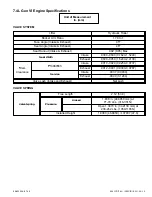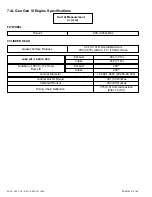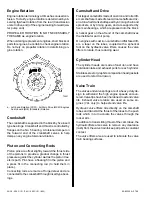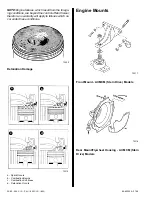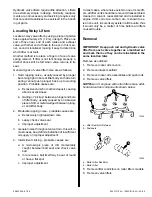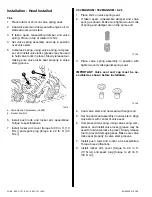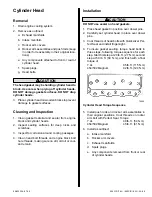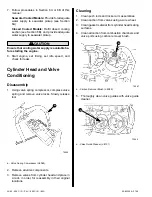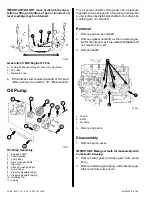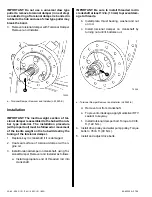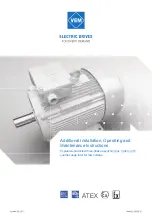
90-823224--2 796
454 CID (7.4L) / 502 CID (8.2L) - 3A-25
Hydraulic valve lifters require little attention. Lifters
are extremely simple in design. Normally, readjust-
ments are not necessary and servicing requires only
that care and cleanliness be exercised in the handl-
ing of parts.
Locating Noisy Lifters
Locate a noisy valve lifter by using a piece of garden
hose approximately 4 ft. (1.2 m) in length. Place one
end of hose near end of each intake and exhaust
valve, with other end of hose to the ear. In this man-
ner, sound is localized, making it easy to determine
which lifter is at fault.
Another method is to place a finger on face of valve
spring retainer. If lifter is not functioning properly, a
distinct shock will be felt when valve returns to its
seat.
General types of valve lifter noise are as follows:
1. Hard rapping noise - usually caused by plunger
becoming tight in bore of lifter body so that return
spring cannot push plunger back up to working
position. Probable causes are:
a. Excessive varnish or carbon deposit, causing
abnormal stickiness.
b. Galling or “pickup” between plunger and bore
of lifter body, usually caused by an abrasive
piece of dirt or metal wedged between plung-
er and lifter body.
2. Moderate rapping noise - probable causes are:
a. Excessively high leakdown rate.
b. Leaky check valve seat.
c. Improper adjustment.
3. General noise throughout valve train - this will, in
most cases, be a definite indication of insufficient
oil supply or improper adjustment.
4. Intermittent clicking - probable causes are:
a. A microscopic piece of dirt momentarily
caught between ball seat and check valve
ball.
b. In rare cases, ball itself may be out of round
or have a flat spot.
c. Improper adjustment.
In most cases, where noise exists in one or more lift-
ers, all lifter units should be removed, disassembled,
cleaned in solvent, reassembled and reinstalled in
engine. If dirt, corrosion, carbon, etc., is shown to ex-
ist in one unit, it more likely exists in all the units; thus
it would only be a matter of time before all lifters
caused trouble.
Removal
IMPORTANT: Keep push rod and hydraulic valve
lifter from each valve together as a matched set
and mark them so they can be reinstalled in the
same location later.
Remove as outlined:
1. Remove rocker arm covers.
2. Remove intake manifold.
3. Remove rocker arm assemblies and push rods.
4. Remove valve lifters.
NOTE:Gen VI engines with roller lifters have addi-
tional valve train components shown below.
72329
b
a
a - Lifter Restrictor Retainer
b - Fasteners
72340
b
a
a - Roller Lifter Restrictor
b - Roller Lifter
5. Remove lifter restrictors on roller lifters models.
6. Remove valve lifters.



